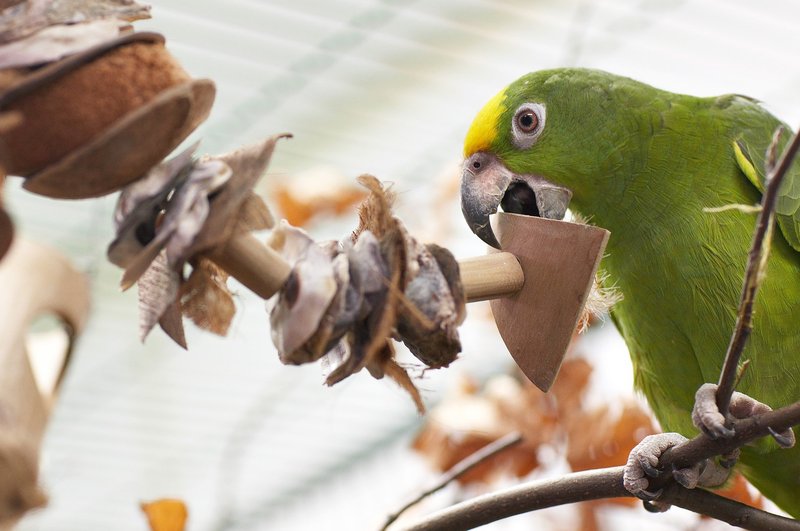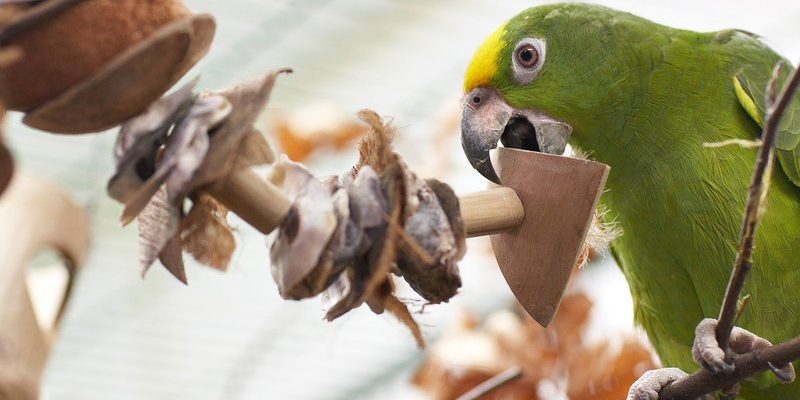
So, what exactly does an Amazon parrot eat? And how do they go about hunting or foraging for food? Well, think of it like a gourmet meal plan. These parrots enjoy a varied diet, which includes fruits, seeds, nuts, and even flowers. They make use of their powerful beaks and impressive agility to gather food, sometimes even competing with other wildlife for their next snack. In this article, we’ll dive into the specifics of their diet and explore their unique techniques for finding food in their natural habitat.
A Diverse Diet: What Do Amazon Parrots Eat?
Amazon parrots are true omnivores. This means they eat a great variety of foods, but their favorites often come from the fruits and seeds available in their tropical environments. You might be wondering what types of fruits these feathered friends enjoy. Here’s a quick list:
- Fruits: Mango, Papaya, Bananas, Grapes, and Berries
- Seeds: Sunflower seeds, Pumpkin seeds, and various nuts
- Green Vegetables: Leafy greens, Peas, and Bell peppers
These birds are particularly fond of fruits like mangoes and papayas. Imagine biting into a juicy mango on a hot day—that’s the delight of an Amazon parrot! They have a knack for choosing the ripest and juiciest fruits, thanks to their keen eyesight and sense of taste. Additionally, they often enjoy the seeds and nuts that come from these fruits, making the most out of what they find.
Wild Amazon parrots also consume flowers and leaves. These parts of plants provide them with essential nutrients and are often less competitive food sources. Honestly, these parrots are pros at utilizing their environment, ensuring they get a balanced diet that suits their lively personalities and energetic lifestyles.
Hunting Techniques: How Do Amazon Parrots Forage?
You might think of hunting as a skill reserved for predators, but for Amazon parrots, foraging is an art form. These birds use their intelligence and problem-solving skills to find food, making them fascinating to watch. The first technique they often employ is perching. Imagine yourself sitting at a café, scanning the menu for the best dish. For Amazon parrots, sitting high in a tree gives them a vantage point to spot ripe fruits and other food sources.
Once they’ve located a potential meal, they get to work. Their strong beaks allow them to crack open tough nuts and seeds easily. You could say their beaks are like having a built-in tool, perfectly designed to tackle the challenges of their diet. They can exert incredible force, enabling them to access the delicious insides of hard-shelled nuts.
Social Foraging: Working Together to Find Food
Another interesting aspect of Amazon parrot behavior is their social foraging. These birds are often seen in flocks, and for good reason. Just like a group of friends going out to eat, they can benefit from working together to find food. When they spot a promising food source, they’ll communicate with each other through calls and gestures, alerting others to the opportunity. You might hear a lively chorus of squawks as they signal it’s time to feast!
In a flock, they also have each other’s backs. If one bird encounters a predator while foraging, it can alert the rest, allowing them to escape danger. This teamwork not only helps them find food more efficiently but also contributes to their safety in a world full of potential threats.
The Role of Habitat in Their Diet
Habitat plays a crucial role in what the Amazon parrot eats. Typically found in tropical and subtropical forests, they thrive in richly biodiverse areas. This environment provides a constant supply of fruits, seeds, and flowers. Imagine living in a buffet where food is abundant all year round!
When their habitat becomes threatened due to deforestation or other human activities, their diet can suffer. With fewer trees, they have less access to their favorite fruits and seeds. This is why protecting their natural habitats is essential not just for them but for other wildlife as well. Their reliance on specific regions highlights how interconnected these ecosystems are, and how vital it is to maintain their balance.
Seasonal Changes: How Their Diet Adapts
Interestingly, the Amazon parrot’s diet can also change with the seasons. During the wet season, fruits are plentiful, and foraging is easier. Birds can find a wide variety of food without much competition. However, during the dry season, they may have to be more resourceful. You might picture this time as a scavenger hunt, as these clever birds search for hidden seeds and nuts that become more scarce.
During the dry season, they may turn to other food sources that are less common in the wet season. This adaptation shows just how versatile these birds are. It’s like having a chef who can whip up meals with whatever ingredients are available, ensuring they always have something delicious to eat.
Amazon parrots are truly remarkable creatures when it comes to foraging and eating. Their diverse and adaptable diet stands as a testament to their survival skills. Whether they’re cracking nuts with their powerful beaks or teaming up with friends to find the juiciest fruits, these birds show us that there’s more to eating than just filling our bellies—it’s about enjoying what nature has to offer.
As we learn about their eating habits and hunting techniques, we should also consider the importance of protecting their habitats. By doing so, we help ensure that these beautiful birds continue to thrive and delight us with their vibrant colors and engaging behaviors. So the next time you see an Amazon parrot, remember the fascinating world of foraging that lies behind their lively antics!

